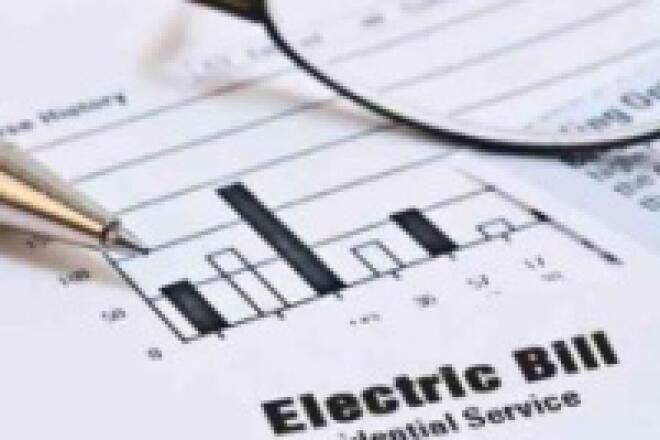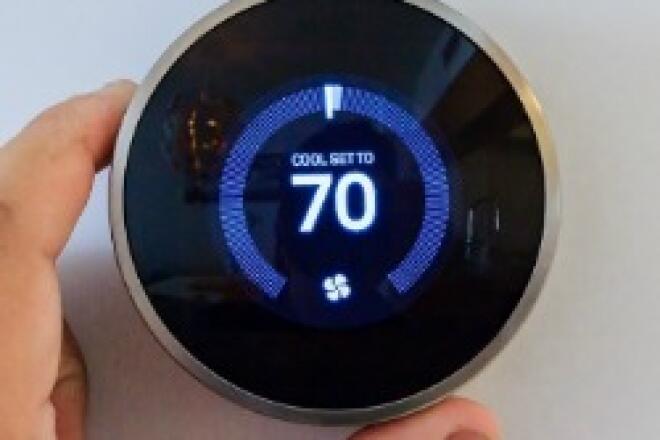
6 Easy Ways to Save Energy This Summer
As temperatures start to soar, energy bills also rise as you rely more on your air conditioner to stay comfortable. The amount of time almost everyone is spending inside due to COVID quarantining is also contributing to more energy use in the home. Luckily, there are many different ways to stay cool while using energy efficiently.
Here are six easy ways that you can save energy this summer:
1. Make sure your ceiling fans are rotating in the proper direction
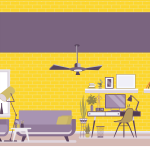 In the hotter months, relying entirely on air conditioning for temperature relief can quickly rack up your energy costs. Instead, try using ceiling fans to cool down. To make fans most effective, make sure the blades rotate counter-clockwise in the spring and summer. This produces a downward wind that creates a cooling sensation in the air below. Most fans have a direction control switch on the cylinder located in the center of the blades. Since fans only create a cooling feeling and don’t cool air temperatures, remember to turn them off when leaving a room to save extra energy.
In the hotter months, relying entirely on air conditioning for temperature relief can quickly rack up your energy costs. Instead, try using ceiling fans to cool down. To make fans most effective, make sure the blades rotate counter-clockwise in the spring and summer. This produces a downward wind that creates a cooling sensation in the air below. Most fans have a direction control switch on the cylinder located in the center of the blades. Since fans only create a cooling feeling and don’t cool air temperatures, remember to turn them off when leaving a room to save extra energy.
2. Set your thermostat to the optimal setting (or upgrade to a smart one)
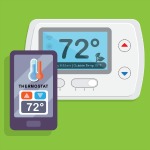 Try setting your thermostat higher when you are away or sleeping to cut back on energy use and costs. You can save up to 10 percent a year on cooling by raising your thermostat 7°-10°F for eight hours a day. Since A/C use is often a large part of the average electric bill, this definitely adds up. Thermostats can be manually or automatically set to turn your air conditioning off when you are not at home and turn it on again when you return for maximum comfort. Smart thermostats learn your patterns and adjust accordingly. Some smart thermostats also have the ability to sense environmental factors and use this information to more efficiently counteract the effects to keep your home feeling comfortable and your bills down. Your energy company may even subsidize part of the cost of upgrading!
Try setting your thermostat higher when you are away or sleeping to cut back on energy use and costs. You can save up to 10 percent a year on cooling by raising your thermostat 7°-10°F for eight hours a day. Since A/C use is often a large part of the average electric bill, this definitely adds up. Thermostats can be manually or automatically set to turn your air conditioning off when you are not at home and turn it on again when you return for maximum comfort. Smart thermostats learn your patterns and adjust accordingly. Some smart thermostats also have the ability to sense environmental factors and use this information to more efficiently counteract the effects to keep your home feeling comfortable and your bills down. Your energy company may even subsidize part of the cost of upgrading!
3. Use caulk or weather-stripping to keep the hot air out
 Sealing your home from outside warm weather helps maintain a cooler temperature inside. An easy way to spot cracks that allow air to leak in or out is to look for light shining through. The two main methods of sealing cracks are caulking and weather-stripping. Caulking is used for stationary cracks around the home. It is best applied in dry, warm weather for a successful seal. Parts of your house that can move but still need sealing, such as windows or doors, can be secured with weather-stripping. These are two easy DIY home projects you can complete yourself with your extra time home due to quarantine. It’s convenient to order caulk and weather-strips so you can begin improving your home in no time!
Sealing your home from outside warm weather helps maintain a cooler temperature inside. An easy way to spot cracks that allow air to leak in or out is to look for light shining through. The two main methods of sealing cracks are caulking and weather-stripping. Caulking is used for stationary cracks around the home. It is best applied in dry, warm weather for a successful seal. Parts of your house that can move but still need sealing, such as windows or doors, can be secured with weather-stripping. These are two easy DIY home projects you can complete yourself with your extra time home due to quarantine. It’s convenient to order caulk and weather-strips so you can begin improving your home in no time!
4. Make sure your HVAC system is properly maintained and running efficiently
![]() Perform routine maintenance on your HVAC system to ensure its ability to work in peak condition. Regularly clean or replace air filters to avoid issues with airflow or clogs from dust and debris. Air conditioner coils – an evaporator coil and a condenser coil – also need to be cleaned regularly. If the unit is outdoors, sealing any cracks can help prevent additional dirt from entering. Sealing these also makes your machine run more efficiently. The unit’s condensate line should also be checked occasionally to be sure that the drain is working properly. Any drain clogs can be cleared using a wet/dry vacuum cleaner. These projects can be accomplished yourself, or you can hire an HVAC specialist to help you ensure your unit is running as efficiently as possible.
Perform routine maintenance on your HVAC system to ensure its ability to work in peak condition. Regularly clean or replace air filters to avoid issues with airflow or clogs from dust and debris. Air conditioner coils – an evaporator coil and a condenser coil – also need to be cleaned regularly. If the unit is outdoors, sealing any cracks can help prevent additional dirt from entering. Sealing these also makes your machine run more efficiently. The unit’s condensate line should also be checked occasionally to be sure that the drain is working properly. Any drain clogs can be cleared using a wet/dry vacuum cleaner. These projects can be accomplished yourself, or you can hire an HVAC specialist to help you ensure your unit is running as efficiently as possible.
5. Upgrade your home’s lighting to energy-efficient LEDs
 LEDs are one of the smartest energy efficiency upgrades you can make around your home. LEDs use 75 percent less energy and last 25 times longer than incandescent bulbs. They are also safer to have in the home and less of a fire hazard since they don’t rely on heat. This lack of heat means less work for your air conditioner and lower bills as a result. LED bulbs are also less prone to breakage since they are not made of glass. The average American home has around 40 lightbulbs and replacing all 40 incandescent bulbs with LEDs could result in savings of $300 a year on energy costs. There are misconceptions of how much switching to LEDs costs, but if purchased in bulk, they can cost around $1-2 a bulb.
LEDs are one of the smartest energy efficiency upgrades you can make around your home. LEDs use 75 percent less energy and last 25 times longer than incandescent bulbs. They are also safer to have in the home and less of a fire hazard since they don’t rely on heat. This lack of heat means less work for your air conditioner and lower bills as a result. LED bulbs are also less prone to breakage since they are not made of glass. The average American home has around 40 lightbulbs and replacing all 40 incandescent bulbs with LEDs could result in savings of $300 a year on energy costs. There are misconceptions of how much switching to LEDs costs, but if purchased in bulk, they can cost around $1-2 a bulb.
6. Adjust your window coverings to keep cool
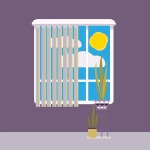 During the day, the sun’s rays warm up everything they touch. You can keep this unwanted heat out with shades, blinds, curtains or window films. Planting trees and tall shrubs outside can provide a source of natural shade for windows. If you are lucky enough to live in an area that reaches lower temperatures at night, you can open your windows when sleeping for an air conditioning alternative and close them in the morning to trap the cool air inside.
During the day, the sun’s rays warm up everything they touch. You can keep this unwanted heat out with shades, blinds, curtains or window films. Planting trees and tall shrubs outside can provide a source of natural shade for windows. If you are lucky enough to live in an area that reaches lower temperatures at night, you can open your windows when sleeping for an air conditioning alternative and close them in the morning to trap the cool air inside.
Although keeping comfortable in the summer may seem difficult and costly, with these tips you can use less energy, get more benefits from your current energy usage and stay cool. Small changes today can lead to long-term savings in the future!
Looking for more ways to save this summer? Check out our Ways to Save on Energy fact sheets for more tips.

